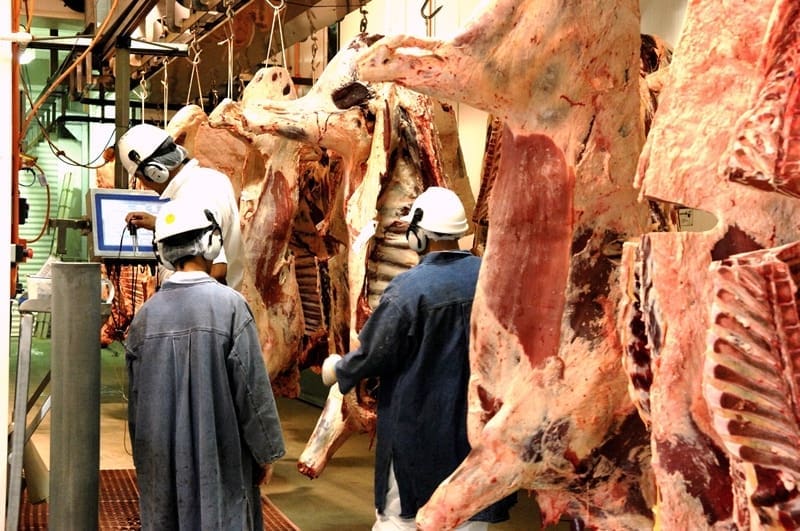THE continuing surge in value of the Aussie dollar has distracted beef exporters from the ongoing issue of limited cattle supply this week.
The A$ has now spiked 14c or 21 percent against the US dollar since mid-March, making it one of the top-performing currencies in the world. March’s low at around US56.5c was the currency’s lowest point in 18 years.
 But the A$ hasn’t just been strengthened relative to the US$. It has also risen more than 20pc against China’s yuan and Japan’s Yen, and just over 17pc against the Euro since March. China has allowed the Yuan to drift lower this year, as it grapples with a slowing economy and rising trade tensions with the US.
But the A$ hasn’t just been strengthened relative to the US$. It has also risen more than 20pc against China’s yuan and Japan’s Yen, and just over 17pc against the Euro since March. China has allowed the Yuan to drift lower this year, as it grapples with a slowing economy and rising trade tensions with the US.
The rise could not have come at a worse time, given relatively high (on a world scale) Australian livestock prices, and depreciating South American currencies in major beef export nations including Brazil and Argentina.
With more than 70 percent of Australian beef production destined for offshore markets, currency has a significantly larger impact on Australia than many other beef trading nations.
As currency moves higher, it reduces the competitiveness of Australian beef on the world stage, against alternatives from North or South America, or New Zealand.
While some might point out that the A$ some years ago traded at, or above parity against the US$, it’s important to remember that currencies reflect ‘relativities’ rather than ‘absolutes’, analysts have point out.
Nor is the explanation for the A$ strength found purely in US$ weakness. During periods of perceived heightened risk, during the depths of COVID, capital flows towards the ‘safe haven’ of the US markets, particularly the US bond market. When risk appetites return, as they currently are, the A$ – regarded as providing an exposure to Asia, and China in particular – strengthens.
Currency momentum has also been fuelled by the resilience in commodity prices. In particular, iron ore prices has surged to well above $US100/t since the start of June, reflecting strong demand from China and the shutdown of mines in Brazil. Australia is on track to earn more than $100 billion from iron ore exports this year – a record for any commodity.
Whether the A$ strength is sustained probably depends on whether the success in containing the COVID-19 virus is replicated in a successful, if slow reopening of the economy, analysts said overnight. It’s probably also contingent on the efforts to restart other economies and, in particular, what happens in China and the US from here.
As the panic in financial markets has subsided, and especially as Australia has been successful in containing the local spread of the pandemic, the currency has rallied strongly.
Direct consignment offers steady
A level of stability is evident in direct consignment slaughter grid offers again this week.
Southern Queensland grids show competitive offers of 600-620c/kg on four-tooth grassfed steers (10c less for implanted cattle on some offers), and 520-540c/kg on heavy cows. Some Central Queensland sheds are 10c behind those rates.
Further south, a large northern NSW export processor has offers for HGP-free four-tooth steer of 560c, and heavy cows 540c, while in southern NSW and South Australia, processor offers of 615c for HGP-free four-tooth steer and 560c on heavy cows are evident.
Over the hooks prices in NSW and Victoria last week were more or less unchanged, with grown four-tooth steers in NSW averaging 587c and best heavy cows 543c, while in Victoria, the same steers were attracting offers averaging 612c, and cows 519c.
Saleyards trends this past week have seen northern sales closing the gap on high prices seen in southern saleyards over the past three weeks.
Saleyards numbers in southern sales early this week were well down, due to the Monday public holiday, with just 475 yarded at Gunnedah yesterday and 740 at Wodonga. Gunnedah saw a cow market trend lower by 2-7c/kg, with reduced competition, but slaughter steers were too few to quote. Wodonga saw trade and heavy cattle in short supply, with heavy steers and bullocks making from 320c to 372c/kg.
Beef kill contracts
Last week’s eastern states beef kill fell 7pc from the previous week, to 120,108 head. All of that can be attributed to a substantial 15pc decline in weekly slaughter in Queensland, week-on-week, down 11,000 to 56,900 head. The single biggest factor in Queensland’s decline was the week-long closure of JBS’s Dinmore facility – the largest processing plant in Australia – due to cattle supply limitations.
All other states showed modest lifts in numbers, or were about the same as the previous week.
NSW lifted throughput by 2pc to 30,598 head, while both South Australia and Tasmania were 1pc higher at 3243 and 4958 head respectively. Victoria was unchanged on the previous week at 24,409 head.
Expect to see some significant declines in cattle throughput in southern states for the current week’s kills reported n by NLRS next Tuesday, however, due to Monday’s Queen’s birthday holiday, which is observed in Queensland later in the year.
Overall, last week’s Eastern states beef kill was 22pc behind the same week last year.
